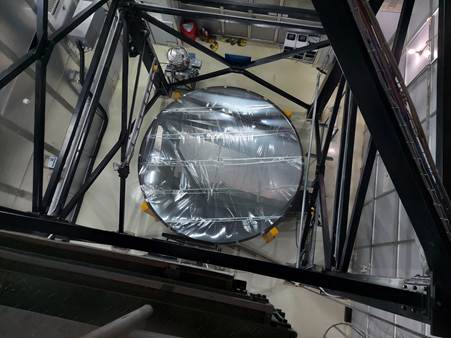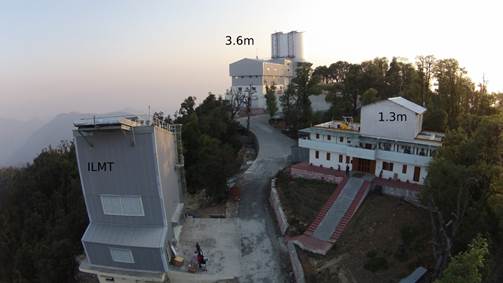- Saturday, April 20, 2024
The telescope is located at the Devasthal Observatory campus of Aryabhatta Research Institute of Observational Sciences (ARIES), Nainital Uttarakhand.

By: Pramod Thomas
INDIA has installed Asia’s largest liquid-mirror telescope at Devasthal, Uttarakhand to track space debris and asteroids, an official statement said.
It employs a 4-meter-diameter rotating mirror made up of a thin film of liquid mercury to collect and focus light and can identify transient and variable objects such as supernovae, and gravitational lenses, the statement added.
A thin transparent film of mylar protects the mercury from the wind. The reflected light passes through a sophisticated multi-lens optical corrector that produces sharp images over a wide field of view. Meanwhile, a large-format electronic camera located at the focus records the images.
Built by astronomers from India, Belgium and Canada, the telescope is located at the Devasthal Observatory campus of Aryabhatta Research Institute of Observational Sciences (ARIES), Nainital Uttarakhand.

Prof Paul Hickson, University of British Columbia, Canada, an expert on liquid mirror technology, said: “The rotation of the earth causes the images to drift across the camera, but this motion is compensated electronically by the camera. This mode of operation increases observing efficiency and makes the telescope particularly sensitive to faint and diffuse objects.”
Prof Dipankar Banerjee, director, ARIES has said that he is hopeful the project will attract and motivate several young minds from scientific and engineering backgrounds to take up challenging problems.
According to Dr Kuntal Misra, project investigator of the liquid-mirror telescope at ARIES, said that when regular science operations begin later this year, the telescope will produce about 10 GB of data every night, which will be quickly analyzed to reveal variable and transient stellar sources.
“The data collected from ILMT will be ideally suited to perform a deep photometric and astrometric variability survey over a period of typically five years,” said Prof Jean Surdej, project director, University of Liège, Belgium and University of Poznan, Poland.